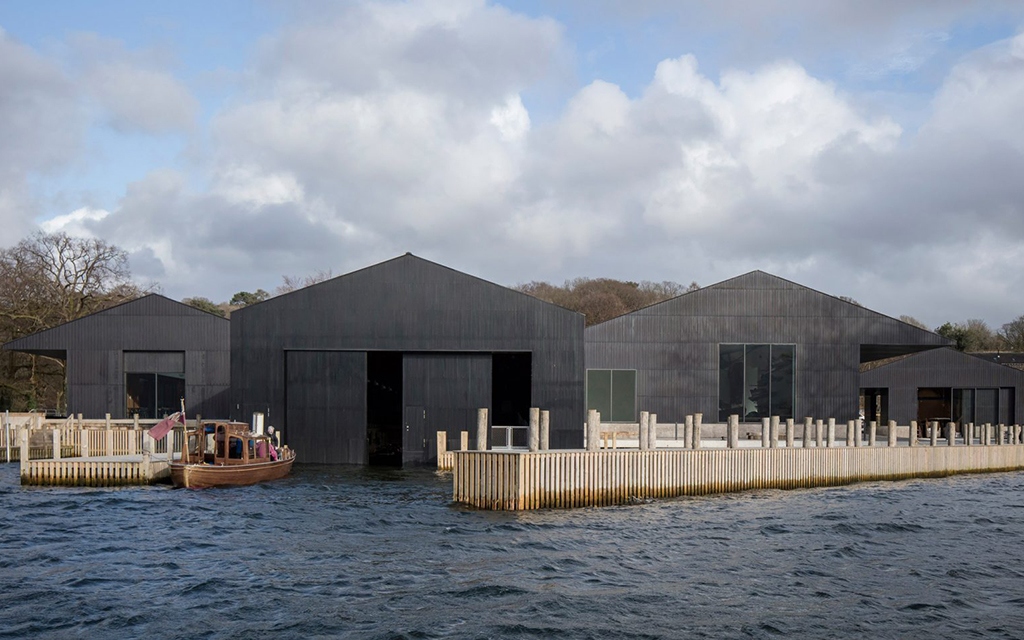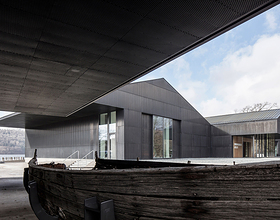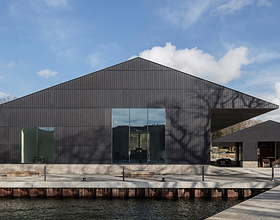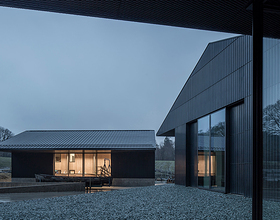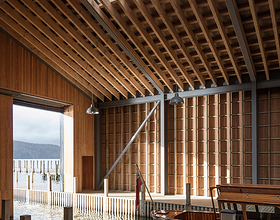WINDERMERE JETTY MUSEUM
The new museum will rehouse an internationally significant boat collection on the shores of Windermere in the Lake District National Park. The new building will include exhibition spaces for the display of steam launches, motorboats, yachts and other vessels, telling the stories of their construction and use on the lake.
A wet dock will allow the display of boats on water within the museum and the site’s boatyard will repurpose a historic gravel-extraction plant, continuing the working life of the place with an active conservation programme of the boats. Emphasis is placed on a visitor experience amongst buildings in a park landscape that creates a strong connection between people, boats and water, as well as providing a reinterpretation of the site’s industrial and picturesque heritage.
The language of the architecture deliberately breaks down the scale of a very large museum into a cluster of pitched roof forms arranged around the wet dock and all aligned spatially to the lakeshore. Extended canopies distinguish the function of each building as part of the overall museum ensemble and extend the inside spaces of the building with all-weather shelter into the landscape.
Oxidised copper cladding covers all external surfaces and consolidates the appearance of a collection of buildings working together as a single museum. The cladding will gradually weather over time and blend the appearance of the structures into the natural environment.
This project was won through an open international competition organised by the Royal Institute of British Architects.
Photo credits: Christian Richter
1870 Projects

